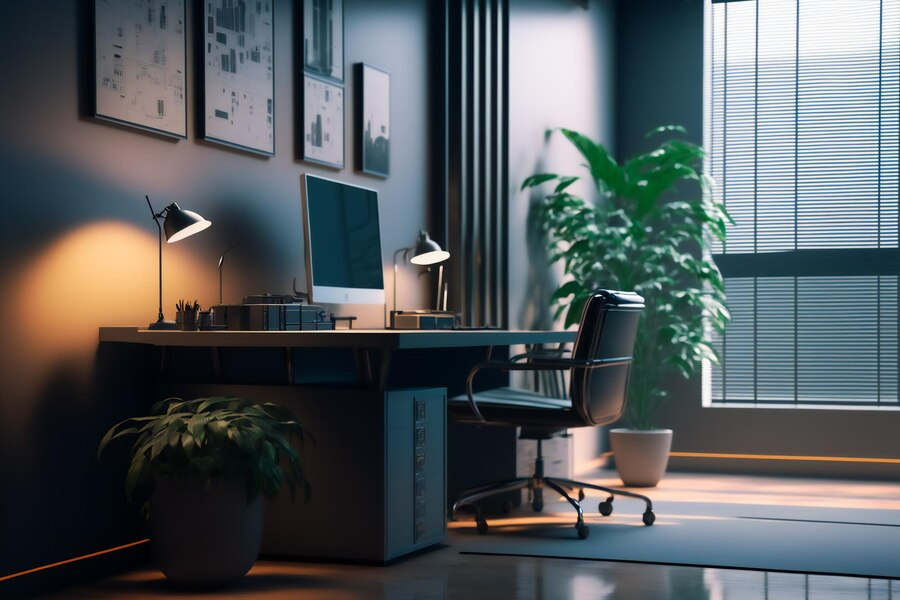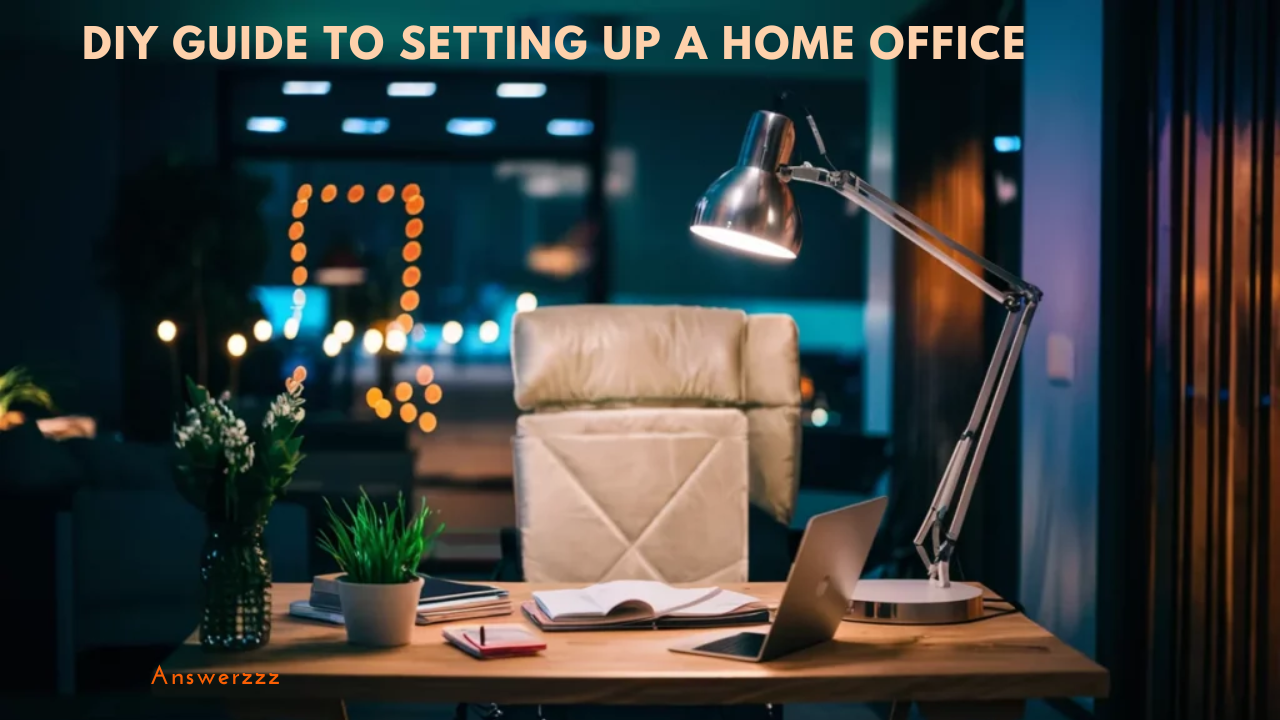In today’s world, the concept of a home office has evolved dramatically, transitioning from a luxury to a necessity for many. As remote work becomes increasingly common, the demand for a functional and efficient workspace at home has surged. However, the notion of setting up a home office often comes with the misconception that it requires a plethora of gadgets and expensive equipment. The reality is that you can create a highly effective home office environment with minimal gadgets, focusing on maximizing efficiency, comfort, and productivity. This guide will walk you through the essential steps to establish your ideal workspace.
Understanding Your Needs

Before diving into the setup process, it’s crucial to assess your specific needs and preferences. Think about the type of work you’ll be doing. Will you be engaging in video calls, or is most of your work solitary and focused? Your requirements will significantly influence the layout and features of your home office. Additionally, consider your working style. Do you thrive in a minimalistic environment, or do you prefer a space adorned with personal touches? Understanding these factors will help you tailor your workspace to suit your unique workflow.
Choosing the Right Space
The first step in creating an efficient home office is selecting the right location within your home. Ideally, your workspace should be separate from distractions like the living room or kitchen. If you have a spare room, this is the perfect choice. However, if space is limited, consider designating a corner of a bedroom or a quiet area of your home where you can focus without interruption. The key is to create a physical separation from the rest of your living space to establish a mental distinction between work and personal life.
Essential Furniture
How to Extend the Battery Life of Your Smartphone with These 8 Simple Tips
When it comes to furnishing your home office, less is often more. A sturdy desk and a comfortable chair are the two most important pieces of furniture. Look for a desk that suits your working style. A simple, clean desk with enough surface area to accommodate your computer and any necessary documents will do. If you prefer standing while working, consider a height-adjustable desk. Ergonomics should be a priority when selecting your chair. Invest in an ergonomic chair that provides adequate support for your back, as this will enhance your comfort during long hours of work.
Lighting Matters
Lighting plays a crucial role in creating a productive work environment. Natural light is the best option, so try to position your desk near a window. If that’s not feasible, invest in good-quality desk lamps and overhead lighting. Opt for warm, diffused light that mimics natural daylight, reducing eye strain and creating a comfortable atmosphere. Additionally, consider using task lighting that can be directed toward specific areas of your workspace, allowing you to adjust based on your needs.
Minimizing Gadgets

While it may be tempting to fill your home office with the latest tech gadgets, a minimalist approach can lead to greater efficiency. Start with the essentials: a reliable computer or laptop, a good-quality keyboard and mouse, and a printer if your work requires it. Assess whether you truly need additional gadgets like smart speakers, multiple monitors, or high-tech organizational tools. Instead, focus on optimizing the use of the equipment you already have. For instance, utilize keyboard shortcuts to streamline your workflow or explore productivity apps that can enhance your efficiency without cluttering your desk with gadgets.
Organization is Key
A well-organized workspace can significantly enhance your productivity. Invest in a few basic organizational tools, such as a filing cabinet or storage boxes, to keep your documents in order. Use drawer dividers or desk organizers to manage smaller items like pens, paper clips, and notepads. Digital organization is equally important; take the time to declutter your desktop and organize your files into clearly labelled folders. Implementing a system that works for you will reduce distractions and make it easier to locate important materials when you need them.
Establishing a Routine
To maximize efficiency in your home office, it’s essential to establish a consistent routine. Set specific work hours and stick to them. This not only helps maintain a work-life balance but also signals to your brain when it’s time to focus. During your work hours, break your tasks into manageable chunks and schedule regular breaks to recharge. Techniques like the Pomodoro Technique—working for 25 minutes followed by a 5-minute break—can enhance your concentration and prevent burnout.
Protecting Your Privacy Online: Simple Tips to Keep Your Data Safe
Personalizing Your Space
While minimalism is key to creating an efficient home office, adding personal touches can enhance your motivation and comfort. Consider incorporating a few decorative elements that inspire you, such as artwork, plants, or motivational quotes. However, keep these additions to a minimum to avoid creating clutter. A small plant, for example, can improve air quality and add a touch of nature to your workspace, fostering a sense of tranquillity. Remember that your workspace should be a reflection of your personality while remaining functional.
Incorporating Technology Wisely
Although the goal is to minimize gadgets, technology can still play a vital role in enhancing your productivity. Use essential software applications that streamline your workflow, such as project management tools, note-taking apps, and time-tracking software. Cloud storage solutions like Google Drive or Dropbox can help you access your documents from anywhere, making it easier to collaborate with others or work on the go. Choose technology that aligns with your needs and integrates seamlessly into your workspace, avoiding unnecessary distractions.
Creating a Distraction-Free Environment
One of the biggest challenges of working from home is managing distractions. Establishing a distraction-free environment is crucial for maintaining focus. Inform family members or roommates of your work hours to minimize interruptions. Consider using noise-cancelling headphones or ambient sound machines to block out background noise. Additionally, develop a habit of turning off notifications on your phone and computer during work hours to reduce digital distractions. Implementing these strategies will help you maintain your concentration and work more efficiently.
Staying Comfortable
Comfort is paramount when setting up your home office. In addition to an ergonomic chair, consider adding accessories that enhance your comfort during long hours of work. A footrest can improve your posture and reduce strain on your legs, while a wrist rest can provide support during typing. Adjust the height of your computer monitor to eye level to prevent neck strain. If you find yourself feeling cold or hot while working, keep a sweater or a fan nearby to ensure you can maintain a comfortable temperature throughout the day.
Setting Boundaries
Working from home can blur the lines between personal and professional life. To maintain your work-life balance, set clear boundaries between your work and personal time. Avoid checking work emails or messages outside of your designated work hours. Establishing these boundaries not only helps prevent burnout but also allows you to fully engage in your personal life when work is done. Communicate these boundaries with your family or housemates to ensure everyone respects your work time.
Embracing Flexibility

While having a routine is essential for productivity, it’s also important to embrace flexibility. Working from home offers the unique advantage of adjusting your schedule to better suit your lifestyle. If you find that you are more productive in the morning, adjust your work hours accordingly. Incorporate activities that boost your energy and creativity, such as taking a walk or practising mindfulness exercises, into your breaks. Flexibility allows you to work in a way that feels right for you, ultimately enhancing your efficiency.
Evaluating and Adapting
As you settle into your new home office setup, take the time to evaluate its effectiveness regularly. Assess your productivity levels and comfort, and make adjustments as needed. If you find that a particular organizational system isn’t working, try a different approach. Stay open to experimenting with new strategies and tools that can improve your workflow. Adapting your workspace to suit your evolving needs is key to maintaining efficiency and satisfaction in your home office.
10 Hidden iPhone Features You Probably Didn’t Know About in iOS 17
Creating a home office that fosters productivity doesn’t require an arsenal of gadgets or high-tech equipment. By focusing on the essentials—choosing the right space, investing in quality furniture, optimizing your organization, and establishing a routine—you can design an effective workspace that caters to your individual needs. Embrace minimalism, but don’t shy away from personal touches that inspire you. With the right mindset and a thoughtful approach, your home office can become a hub of creativity and efficiency, allowing you to thrive in your remote work journey.



